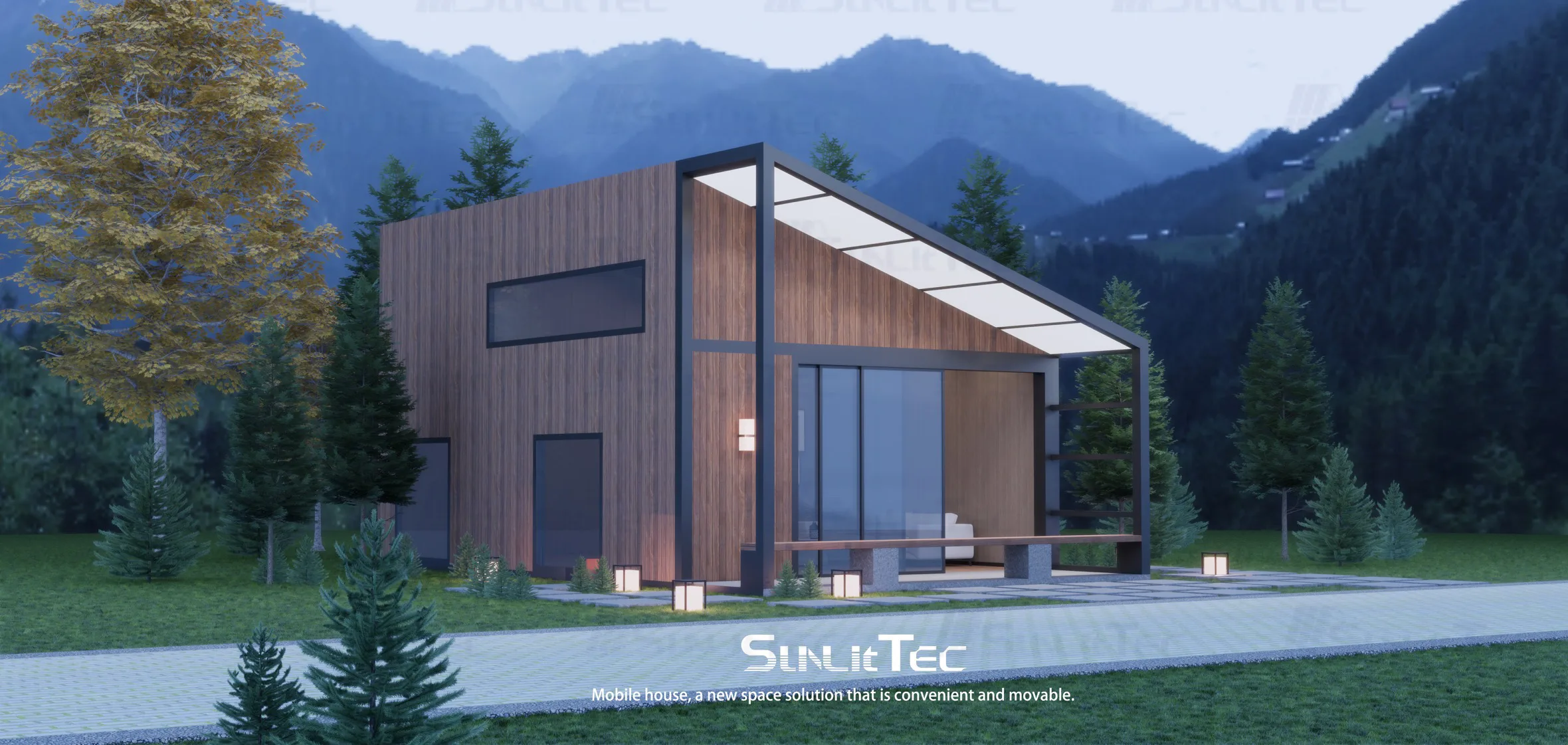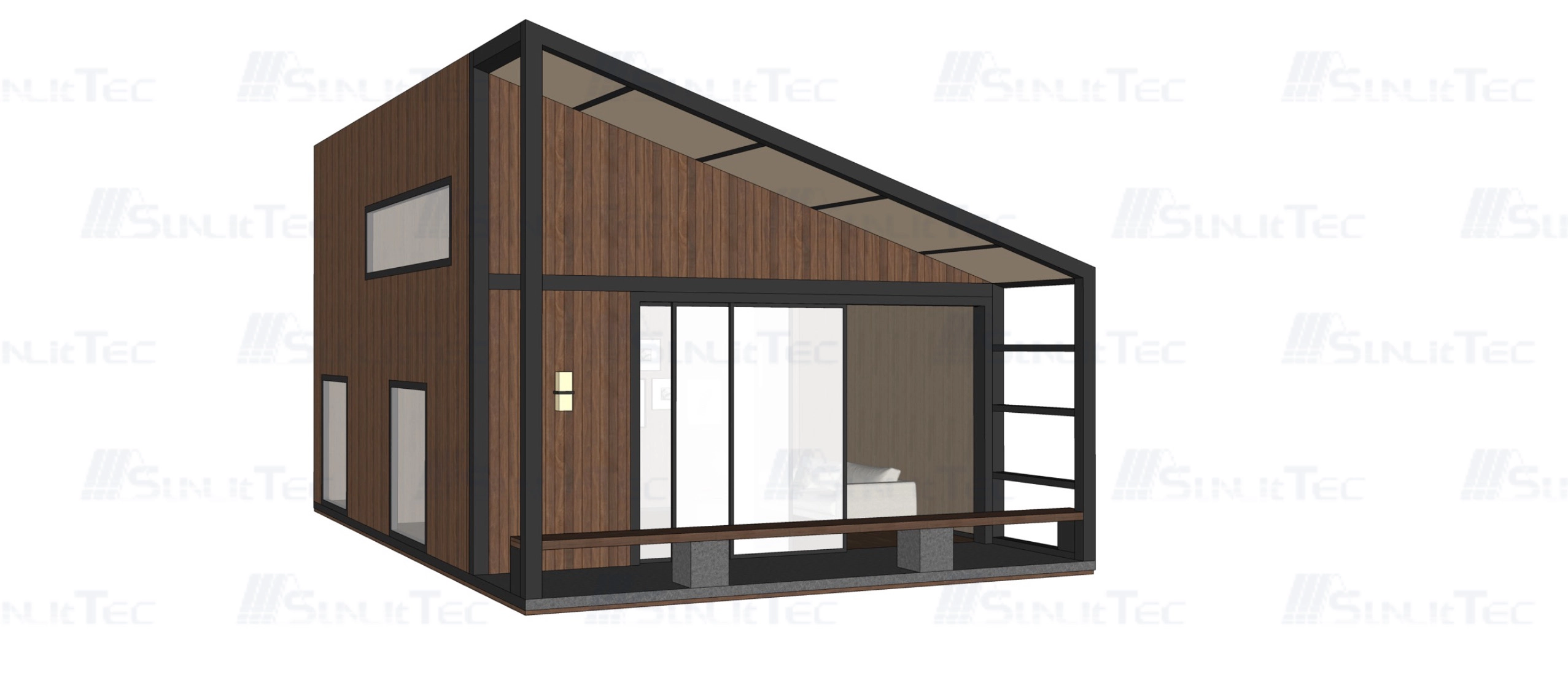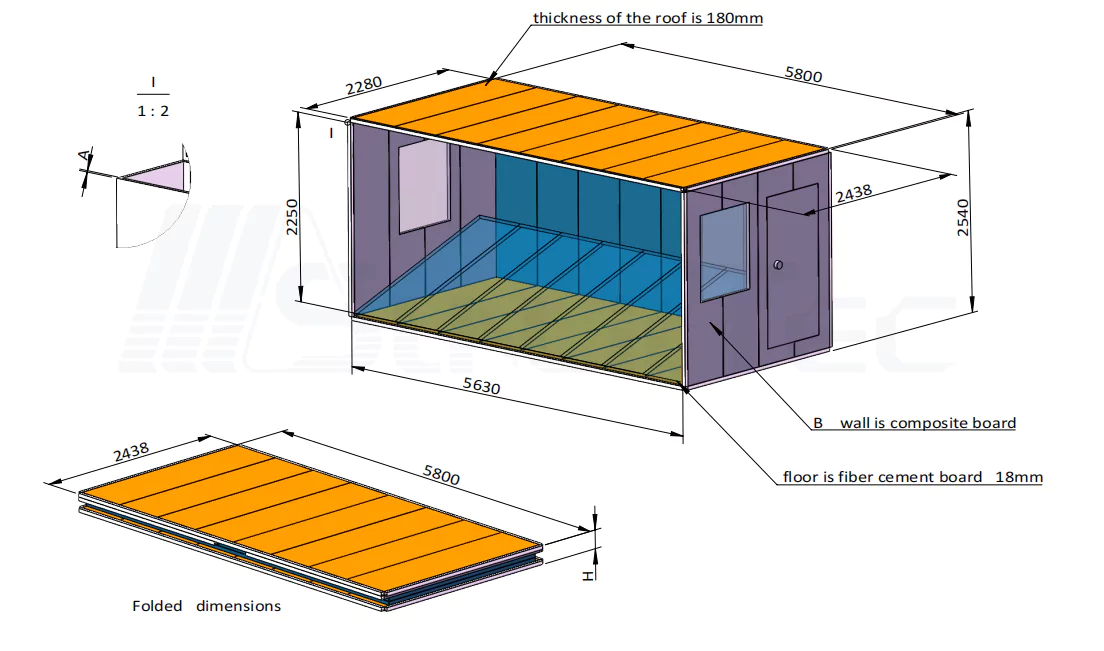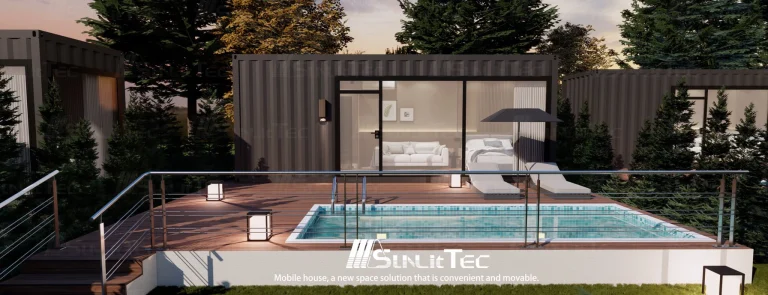
Explore the realm of prefab houses! Here, innovative design meets rapid construction, eco-consciousness, and boundless personalization. Your ideal home might be just a factory away!
What is a Prefab House?
Prefab houses, or prefabricated homes, offer a contemporary alternative to conventional building methods. They use components crafted in a factory. These are then transported to the site for assembly. This method has surged in popularity due to its efficiency, sustainability, and affordability.
Definition and Characteristics of Prefab Houses
Prefab houses feature modular designs. Each component acts as an independent “building block.” Most mobile homes embrace modularization. Each part is prefabricated in a factory. It can be assembled on-site or disassembled for transport. These modules are shipped as whole units or in parts. Prefab homes often utilize light steel components. These ensure durability while remaining lightweight. Light steel prefabricated housing follows standardized processes. This makes it energy-efficient and eco-friendly.
Types of Prefab Houses
Prefab houses come in diverse forms. They cater to varied needs and tastes. Below are some common types:
Container House
Container houses use shipping containers as their core structure. Each container’s wall is a panel. It can be factory-made as a whole or produced in modules for disassembly and transport. These homes are robust and easily movable. They are often used for temporary residences or offices.
Space Capsule
Space capsule prefab homes boast futuristic aesthetics. They are compact yet practical. Currently, most space capsule models are shipped as complete units. These structures suit unique residential experiences or creative commercial purposes.
Apple Cabin
Apple cabins are compact prefab homes with a distinctive apple-like shape. Like space capsules, they offer limited modularity. Yet, they excel in visual appeal and portability.
Board House
Board houses employ lightweight panels. These can be swiftly assembled on-site. They often use detachable color steel sandwich panels. This makes them ideal for long-term living. They offer excellent insulation and design versatility.
Advantages of Prefab Houses
Prefab houses provide numerous benefits. These make them attractive for modern construction projects.
Cost Efficiency in Construction
Prefab homes significantly lower building costs. Most construction work is completed in the factory. This saves time and labor expenses. It also reduces on-site disruptions. This efficient process minimizes waste. It optimizes resource use.
Faster Construction Timeline
Factory production ensures quicker completion compared to traditional methods. For example, container stores are prefabricated in the factory. They only require assembly on-site. This simplifies the building process. It leads to shorter project timelines. Quality remains uncompromised.
Sustainability and Eco-Friendliness
Prefab homes align with green practices. They reduce material waste during production. The assembly rate is high. The construction cycle is brief. This makes them environmentally conscious and energy-saving. Many prefab designs use sustainable materials, such as recycled steel or wood.
Design Flexibility and Customization Options
Modular designs allow homeowners to tailor their prefab houses. You can select from various layouts, finishes, and configurations. These suit your lifestyle. Structural integrity remains intact.
Disadvantages of Prefab Houses
While prefab homes offer many strengths, they face certain challenges.
Initial Costs and Financing Challenges
Prefab homes save money over time. However, initial costs can be higher due to factory production expenses. Financing options may be limited. Not all lenders view prefab homes as conventional properties.
Transportation and Installation Limitations
Transporting large modules to remote areas poses logistical hurdles. For instance, although spacecraft or Apple cabins can be disassembled and transported as a module, the large volume still poses transportation difficulties. Additionally, assembling modules on uneven terrain may require specialized equipment. Extra groundwork preparation might be needed.
Sunlit Tec: A Reliable Supplier for Prefab Houses

Sunlit Tec has established itself as a trustworthy provider of prefab houses. It offers innovative solutions for modern living. With a focus on quality, sustainability, and client satisfaction, they meet diverse housing demands.
Overview of Sunlit Tec’s Offerings
Sunlit Tec specializes in various prefab housing options. These are designed for multiple purposes. Their range includes light steel villas, container houses, modular homes, and integrated structures. These combine utility with aesthetic charm. Light steel components are prefabricated in the factory. They are transported to the site. Then, they are assembled like building blocks. Their prefab homes are built for longevity. They also maintain design versatility.
Why Choose Sunlit Tec for Your Prefab House Needs?
Selecting the right supplier is vital when investing in a prefab house. Sunlit Tec excels due to its dedication to superior materials and outstanding craftsmanship.
High-Quality Materials and Craftsmanship
Sunlit Tec’s prefab houses use top-grade materials. These ensure durability and structural strength. The assembly rate is high. The construction cycle is short. This makes them eco-conscious and energy-efficient. Their light steel prefabricated housing adheres to strict quality standards in factory production. This careful attention to detail creates visually appealing homes. They also withstand diverse environmental conditions.
Customer-Centric Services
Sunlit Tec prioritizes client satisfaction. They offer tailored solutions to meet individual preferences. Their modular designs allow customization in layout, finishes, and configurations. Most mobile homes embrace modularization. Each part acts as an independent “building block.” They also provide comprehensive support. This spans from initial consultation to post-installation services. It ensures a seamless experience for every client.
Frequently Asked Questions (FAQs)
What is the average lifespan of a prefab house?
The lifespan of a prefab house varies. It depends on materials and maintenance. Generally, high-quality prefab houses last 50 years or more with proper care. Light steel components ensure durability. They remain lightweight.
Are prefab houses energy-efficient?
Yes, prefab houses are designed for energy efficiency. Many models include insulated panels and sustainable materials. These reduce energy use for heating or cooling. The construction process is eco-friendly and energy-saving.
Can prefab houses be expanded or modified later?
Prefab houses offer versatility for future changes. Modular designs allow easy addition of new sections. This does not disrupt existing structures. Each module can be prefabricated and assembled by the factory. It can also be split for transport.







